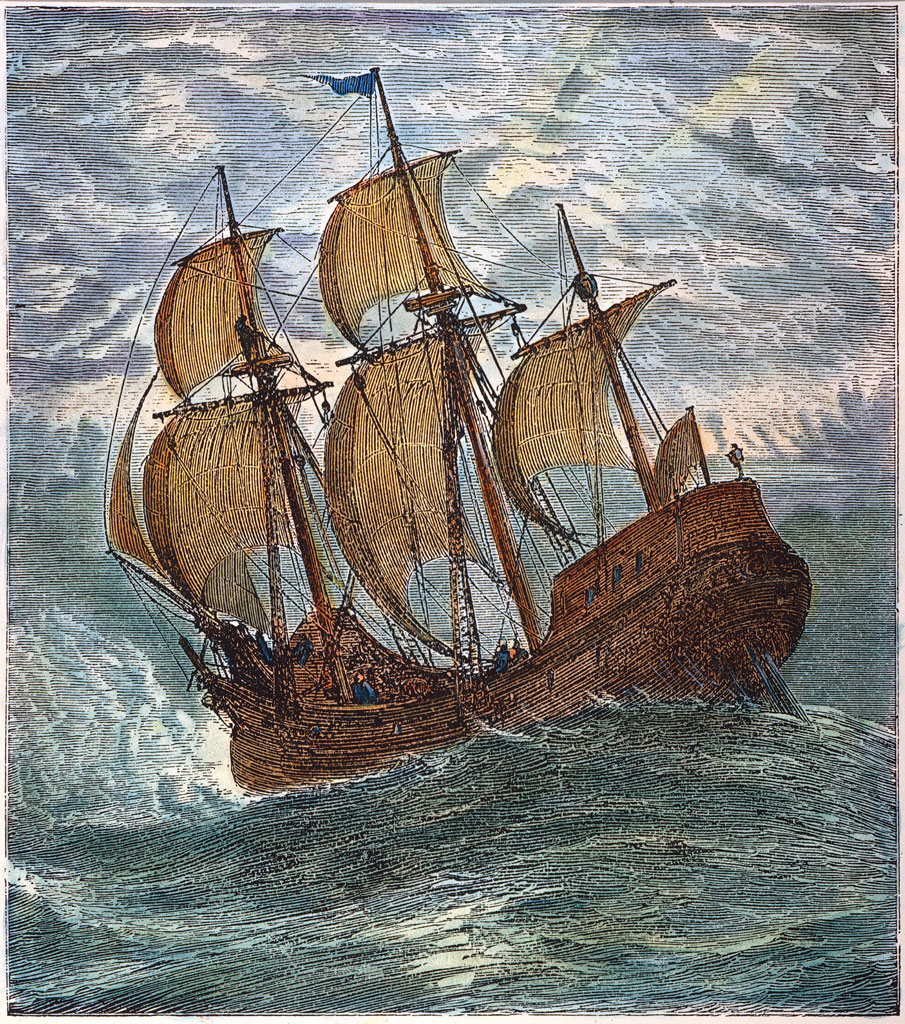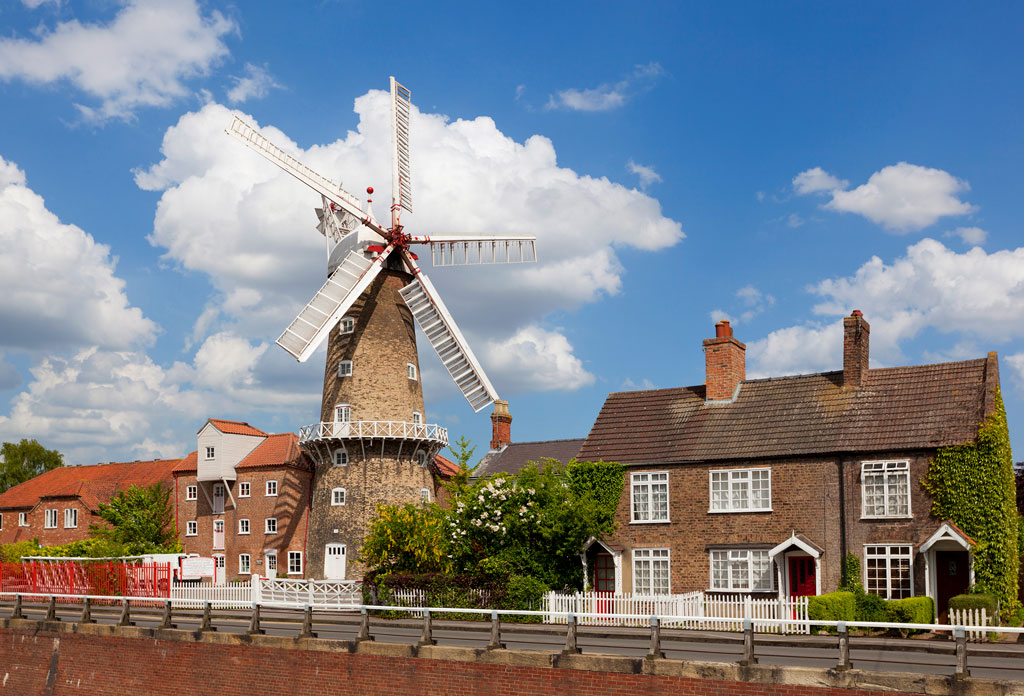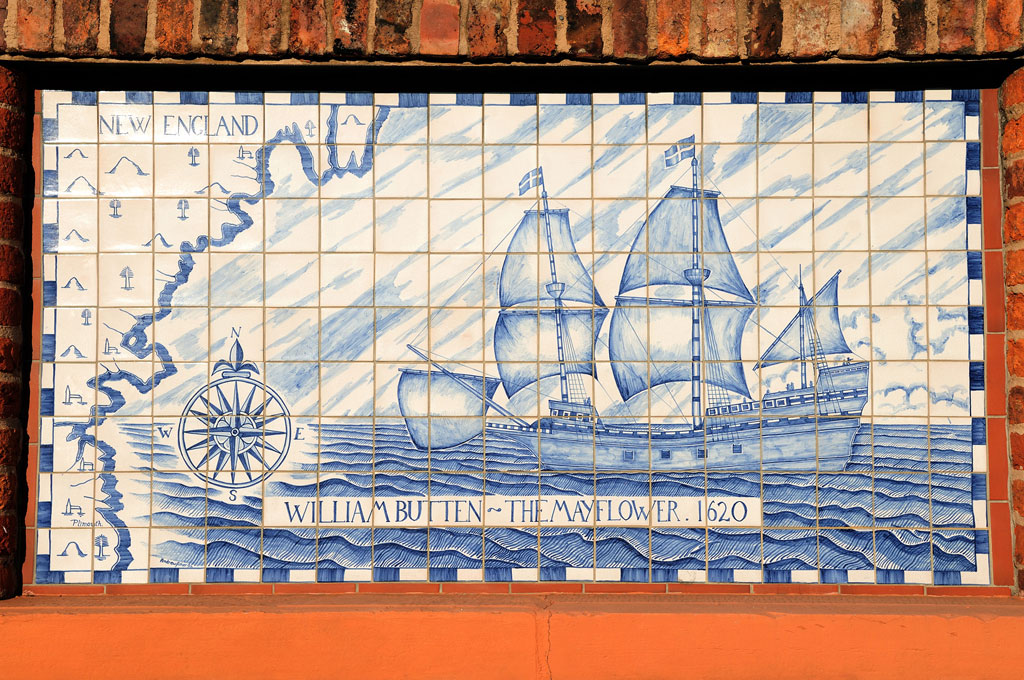2020 marks the 400th anniversary of the epic voyage of the Mayflower. We delve into the early story of the pioneering Pilgrims
On 16 September 1620, the Mayflower set sail from Plymouth on England’s southwestern coast, carrying 102 passengers determined to make a new life for themselves in America. But their story starts long before, in a handful of villages in the heart of England.
In the 16th and early 17th centuries life was tough for people who didn’t conform to the Church of England’s rules. Roman Catholics were famously persecuted, but even within Protestantism there was dissent from those who felt the Church of England’s ritual came between them and God. They wanted to strip away the ornament and “purify” the Church, but it was a dangerous choice. Punishment for defying the Church – and its head, the monarch – was harsh. For some, there was only one solution: emigration.

Historian and author Adrian Gray has spent many years piecing together the fragments of the Mayflower story. “We have only sketchy evidence,” he admits, “as little was written down at the time for fear of it being found and used against them.” Scholars have to read between the lines and follow a trail of radical preachers, many of whom congregated around villages in the area where modern-day Nottinghamshire, Yorkshire and Lincolnshire meet. These shadowy figures are not always the same folk who ended up on the now-famous ship to the New World, but they are the key to the people who did.
The story can be confusing. Johns, Williams, Richards and Annes clutter what records we have. Their parents and grandparents often had exactly the same names, and the churches they attended are also similar in style. But for those keen to trace distant ancestors – or simply learn more about the Pilgrims’ origins – the trail that winds through this area of rural England makes a rewarding itinerary.
A good way to begin is to look at the things the “godly” folk (other people called them Puritans) were fighting against. The Book of Common Prayer was especially hated, as were surplices, kneeling at Communion and any form of ritual. To experience the kind of setting Puritans loathed, attend choral evensong at Lincoln Cathedral. Rainbow-spangled light from the famous stained-glass windows illuminates the dim interior, where the singing, reading of prayers and clerical robes would have been detested by the dissenters, but is a joy for today’s visitors.
The trail really begins outside England’s cities. James I came to the throne in 1603, vowing to deal harshly with critics of the Church, and godly people would travel miles to remote villages to hear charismatic, often unlicensed preachers, whose sermons could last for hours.

Take St Wilfrid’s church in Low Marnham, Nottinghamshire, whose splendid array of ancient gargoyles witnessed preachers who didn’t wear surplices, make the sign of the cross or use rings at weddings: all serious misdemeanours in the eyes of the Church of England.
The church, always too big for its tiny community, belies its silent setting. “There was a row over who should be vicar,” says Adrian Gray. “The Puritans wanted their own man, and several people got arrested and charged for riot.”
Nearby All Saints’, Babworth – also known as the Church in the Woods – is similarly secluded. Still approached by the woodland path the pilgrims would have known, it feels positively cosy. It was anything but. Preacher Richard Clyfton, who had caused a stir at Low Marnham, moved onto Babworth and continued as before. It was illegal to attend any church but your own, but hundreds defied the law and “gadded about” to attend his services. When, in 1605, Clyfton was forcibly replaced, there was another riot. Today, this quiet backwater is famous as the birthplace of the Mayflower congregation and sees many American visitors.
Ejected from Babworth, Clyfton sought shelter at another St Wilfrid’s, this time in the village of Scrooby, home to William Brewster. Brewster was a leading Pilgrim and a passionate Separatist (distinguished from Puritans by a wish to detach from the Church completely, rather than purify it from within).
Brewster would eventually board the Mayflower, but for now, as Scrooby’s bailiff, he brought in dissenting preachers and held meetings at his house. He was joined by young William Bradford, who would join him on the Mayflower and write a history of the expedition: our best contemporary source for the story. He would later become the first governor of the Plymouth colony.
Bradford came from nearby Austerfield. The family home remains a private residence but Bradford’s church, St Helena’s, dates to 1080 and boasts several strange features, including a curious serpent-like dragon tympanum (pediment) in the entrance and a rare Sheela na gig carving. The original font, in which Bradford was baptised, was rediscovered by accident by a local farmer some years ago.
Of the many churches associated with the Mayflower, the most extraordinary has to be the tiny St Lawrence’s in Snarford, Lincolnshire. Deep in the countryside, it boasts funerary monuments relating to the powerful – and Puritan – St Paul family. George and his wife Frances had no children, so poured money into Puritan charities that would fuel the cause. It is worth making the journey for a genuinely gasp-worthy view as you enter this tiny jewel-box of a church.
Worksop Priory is the precise opposite. Large enough to be a cathedral, the former Augustinian priory was a day’s journey between towns on the old London Road,
yet even this vast building saw dissent, with a Puritan vicar, Richard Bernard, acting as a linchpin between godly communities. Two of his children later sailed to the New World; his daughter Mary and her husband Roger Williams would found Providence, Rhode Island.

Some of the Separatists are thought to have worshipped in secret nearby at Gainsborough Old Hall, one of Britain’s best preserved medieval manors, built in 1460. William Hickman, the owner at the time, is thought to have allowed dissenter John Smyth to preach from the hall, which can still be visited. Smyth formed his own Separatist congregation nearby, which would eventually become the Baptist movement.
By this point, things had gone too far. Persecution of dissenters was on the increase and, in 1607, a band of Separatists met by dead of night at Scotia Creek, Fishtoft, near Boston, a small port in Lincolnshire. They planned to sail to the Netherlands, where attitudes were more liberal.
Once on the ship, however, they realised they had been betrayed by the ship’s captain. They were arrested, relieved of their possessions and paraded by boat to Boston, where they were clamped into cells at the Guildhall. The cells still exist today, as does the courtroom where they were tried. Boston, however, had its own independent spirit. The Pilgrims were treated courteously and eventually all but a few were released. Later that year a second journey to the Netherlands was successful.
Boston wasn’t done with dissension. In 1612 fiery clergyman John Cotton began his tenure at St Botolph’s, affectionately known as the Boston Stump. His charismatic, six-hour sermons attracted hundreds of people – and the notice of the authorities. He would later board a ship to the New World and a new ‘Boston’.
The original group of pilgrims were, by now, safely ensconced in Leiden in the Netherlands, but life was challenging and the group started to plan a journey to
a new land. They decided upon America, working with sympathisers in England to fund and organise the journey.
In 1620, a small group returned to England, where they rejoined their fellow Pilgrims and set sail on two ships bound for the New World. It was the start of a new adventure, though as they soon discovered, all was not to be plain sailing.
The story continues in part two on the southwest coast. Click here to get started now, or buy our most recent issue, here, to read the full second instalment of the Mayflower story.

![[263908]BostonStumpwithBlossom](https://www.britain-magazine.com/wp-content/uploads/26390820BostonStumpwithBlossom-696x466.jpg)




 © 2024
© 2024